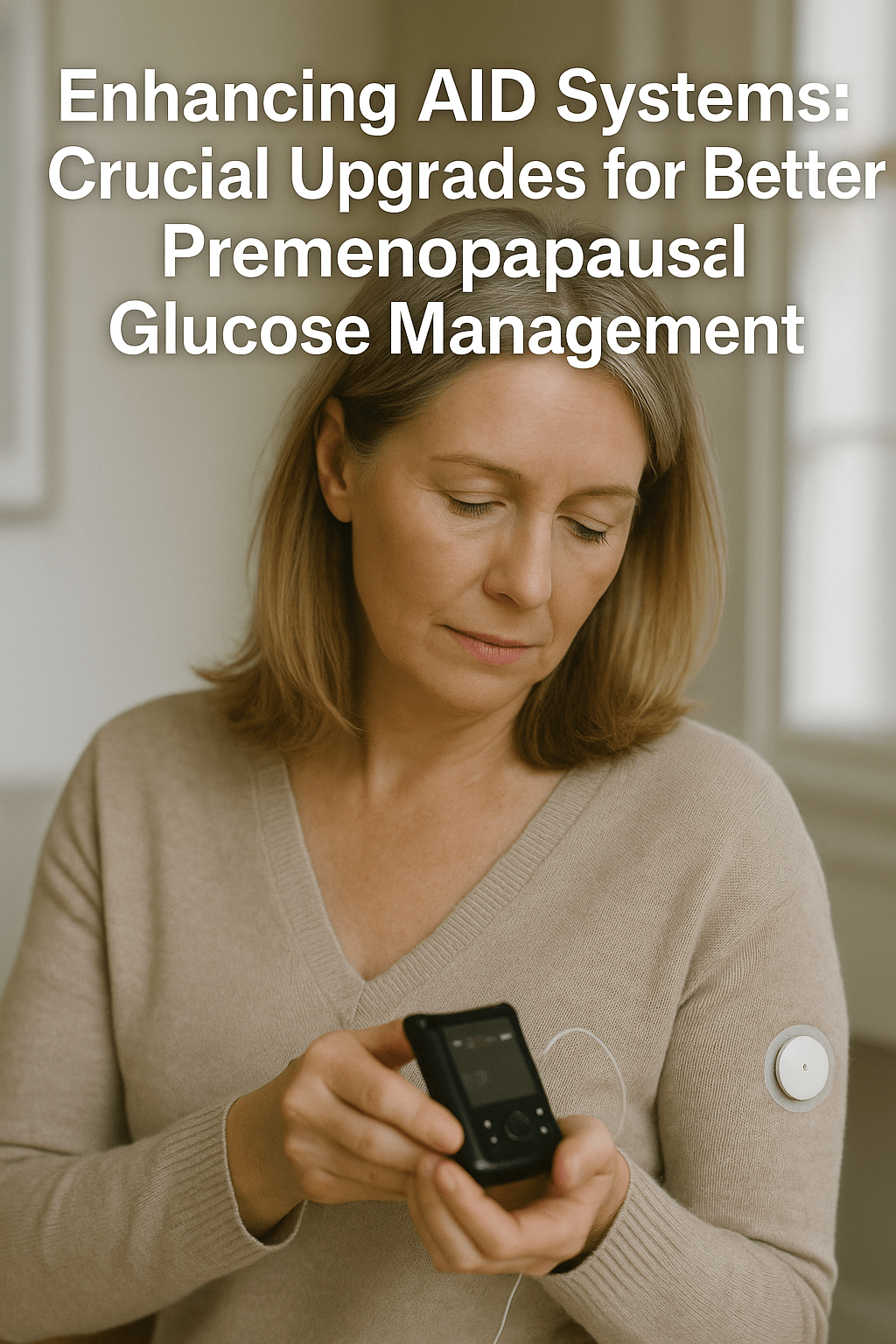
In recent years, significant advancements have been made in the management of glucose levels, particularly for individuals who are premenopausal. Automated insulin delivery (AID) systems have emerged as a pivotal tool in managing glucose levels more effectively. These systems, also referred to as artificial pancreas systems, automatically adjust insulin delivery based on continuous glucose monitoring (CGM) data. However, to maximize their efficacy, particularly for premenopausal individuals who often experience unique physiological challenges, certain upgrades and modifications are essential.
### Understanding the Challenges: Why Premenopausal Women Need Tailored AID Systems
The hormonal fluctuations characteristic of the premenopausal phase can significantly influence glucose levels. Estrogen and progesterone, which vary throughout the menstrual cycle, can alter insulin sensitivity, making glucose management more complex. Research has shown that these hormonal changes can lead to periods of increased insulin resistance, typically observed in the luteal phase of the menstrual cycle, which can complicate maintaining optimal glucose levels.
Additionally, premenopausal women may experience irregular menstrual cycles, which further complicates glucose control. This variability necessitates an AID system that can adapt not only to daily fluctuations but also to cyclical hormonal changes, enhancing both safety and efficacy.
### The Role of Personalized Algorithms in Enhancing AID Systems
To address these challenges, developing and implementing individualized algorithms within AID systems is essential. Such algorithms can be programmed to recognize patterns in hormonal fluctuations and adjust insulin delivery accordingly.
For instance, integrating data from hormone monitoring with sensor glucose data could allow these systems to predict and compensate for changes in insulin sensitivity. By understanding a user’s unique hormonal profile and its effects on glucose levels, an AID system can deliver personalized insulin therapy that is more in tune with the body’s needs.
### Incorporating Advanced Hormone Monitoring
Another crucial upgrade for AID systems involves incorporating advanced hormone monitoring technologies. Continuous hormone monitoring tools, which are currently under development, could provide real-time insights into hormone levels, thus offering additional data for the system to make more accurate insulin dosing decisions.
These tools could potentially work in tandem with existing CGM technologies, providing a comprehensive understanding of both glucose and hormone dynamics. Such integrations would be particularly beneficial for premenopausal individuals, as they might help preempt periods of insulin resistance and allow for preemptive adjustments in insulin delivery.
### Machine Learning and Predictive Analytics: The Next Frontier
Machine learning and predictive analytics are set to play a transformative role in the future of AID systems. These technologies can analyze vast amounts of data to identify trends and predict future glucose levels with greater accuracy. For premenopausal women, predictive analytics could anticipate shifts in glucose levels associated with upcoming hormonal changes, allowing for proactive adjustments in insulin delivery.
The use of artificial intelligence (AI) in these systems could also enable real-time learning and adaptation. As the system gathers more data from an individual, it can refine its algorithms to deliver increasingly precise and effective glucose management. This adaptive approach is particularly valuable for managing the complexities of premenopausal glucose fluctuations.
### Addressing User Experience and Accessibility
While technological enhancements are indispensable, ensuring user-friendly interfaces and broad accessibility is equally important. AID systems must be designed with ease of use in mind, considering that users will have varying levels of comfort with technology. Streamlined, intuitive interfaces that provide clear and actionable insights can significantly enhance user compliance and engagement.
Moreover, making these advanced technologies accessible to a wider population is critical. This includes addressing cost barriers and ensuring that devices are available to those from diverse socioeconomic backgrounds. Enhancing insurance coverage and healthcare support for AID systems can play a crucial role in promoting equitable access.
### Holistic Support: Beyond the Device
Finally, it is important to recognize that technology alone cannot solve all challenges. Comprehensive support, including education and counseling, should accompany AID system use. Healthcare providers need to offer guidance on managing the unique challenges of premenopausal glucose fluctuations, helping users make the most of their AID systems.
Support groups and online resources can also provide valuable assistance, offering a platform for individuals to share experiences and strategies. This holistic approach, combining technology with human support, is key to achieving optimal glucose management.
### Conclusion: A Collaborative Future
As we continue to innovate and refine AID systems, collaboration among researchers, healthcare providers, and technology developers is essential. By working together, we can ensure that these systems are effectively tailored to meet the needs of premenopausal individuals, ultimately improving health outcomes and quality of life.
In a future where glucose management is increasingly personalized and adaptive, premenopausal women can look forward to a more stable and manageable journey through this unique phase of life. The crucial upgrades to AID systems are not just technological advancements; they are a step towards empowering individuals to live healthier, more balanced lives.



